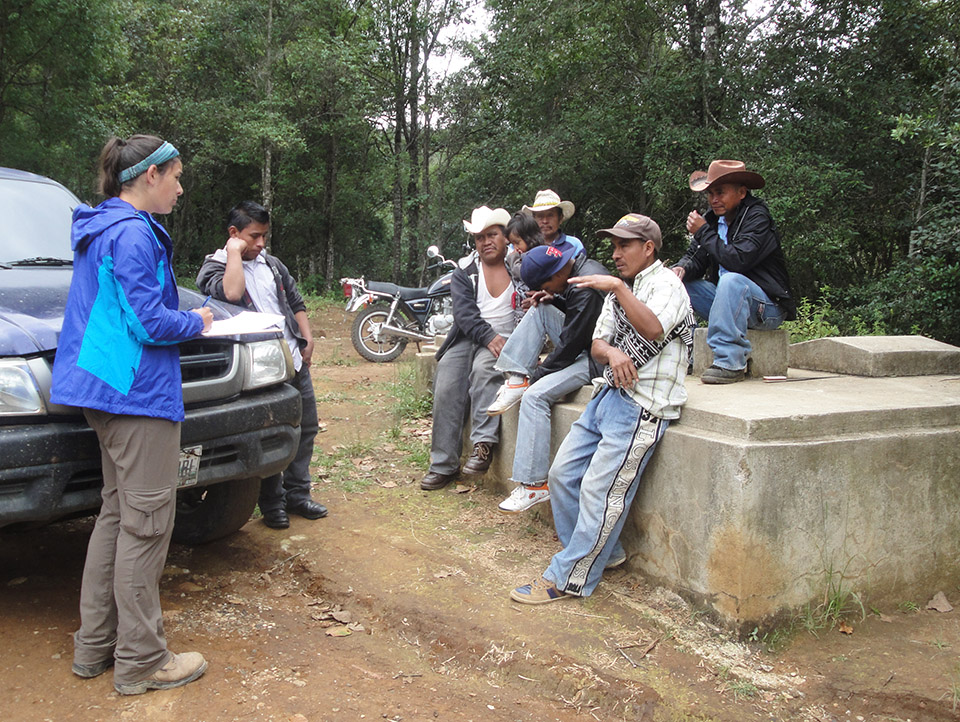January 9, 2019

Elyse Lewis
Ph.D. student, first year
Transportation
Please describe your research.
I am researching how partnerships between public transit agencies and transportation network companies (TNCs such as Lyft, Uber and Via) impact transit systems. Specifically, Sound Transit will partner with Via – an on-demand, corner-to-corner shared mobility service – to provide a new way to access Link Light rail stations in South Seattle. My work will look to support and expand on the intercept surveys and statistical analysis of Orca card rider taps that will be included in the TRAC program assessment. I will be exploring the perspectives of both operators and riders, with the ultimate goal of providing information that will help future decisions related to new mobility services to planners and policy makers.
The broader pilot program and related data collection for the project is funded through the Mobility On-Demand (MOD) Sandbox Program and will be completed in partnership with the Washington State Transportation Center (TRAC).
How did you get interested in this work?
I really enjoy traveling – the original idea for my GRFP proposal came during a trip through Central America from Guatemala to Colombia after I finished my work as an in-country engineering intern for Engineers Without Borders in rural Guatemala. The further I traveled south, the more I observed high-capacity, fixed-route public transit in cities attempting to shift away from loosely-regulated, privately-owned buses and minibuses. In contrast, cities in the U.S. seem to be trending in the opposite direction of public to private TNCs. This made me curious about the relationship between public and private transportation services. In what context do these transportation alternatives make sense? Who benefits and who doesn’t?
 Elyse conducts a semi-structured interview with community leaders in rural Guatemala to support a municipal infrastructure assessment during her time as an in-country engineering intern for Engineers Without Borders in 2014.
Elyse conducts a semi-structured interview with community leaders in rural Guatemala to support a municipal infrastructure assessment during her time as an in-country engineering intern for Engineers Without Borders in 2014.What do you enjoy most about your field of study?
I enjoy how intersectional it is; everyone needs to move around for work, school, health and leisure. As a result, it’s an ideal field for interdisciplinary work with many real-world implications. I hope to produce work that helps better consider the human element in transportation and land use planning and policies.
What type of career do you plan to pursue?
Ultimately my goal is to become a professor of civil engineering, but I am also interested in policy consulting in transportation and land development.
How did you first become interested in engineering?
I grew up in a family of engineers, but in fifth grade, I experienced the power of poor transportation when my dad and I visited my aunt in Guatemala during her service in the Peace Corps. In a particularly memorable experience, our driver had us walk our belongings across a rickety vehicle bridge because he was concerned our combined weight with the vehicle would cause a collapse. Between this experience and exposure to STEM outreach in middle and high school, I decided to pursue a bachelor’s degree in civil engineering because I wanted to provide access by designing and constructing bridges.
How do you spend your spare time?
Mostly with my husband and friends exploring restaurants, breweries and distilleries in Seattle, playing intramural sports, cycling, getting into the mountains to ski or backpack, and getting out onto the lakes/Puget Sound to kayak or paddleboard.